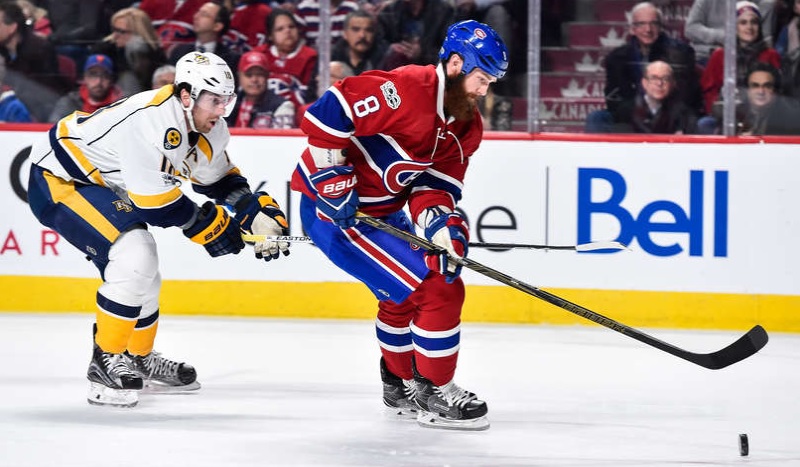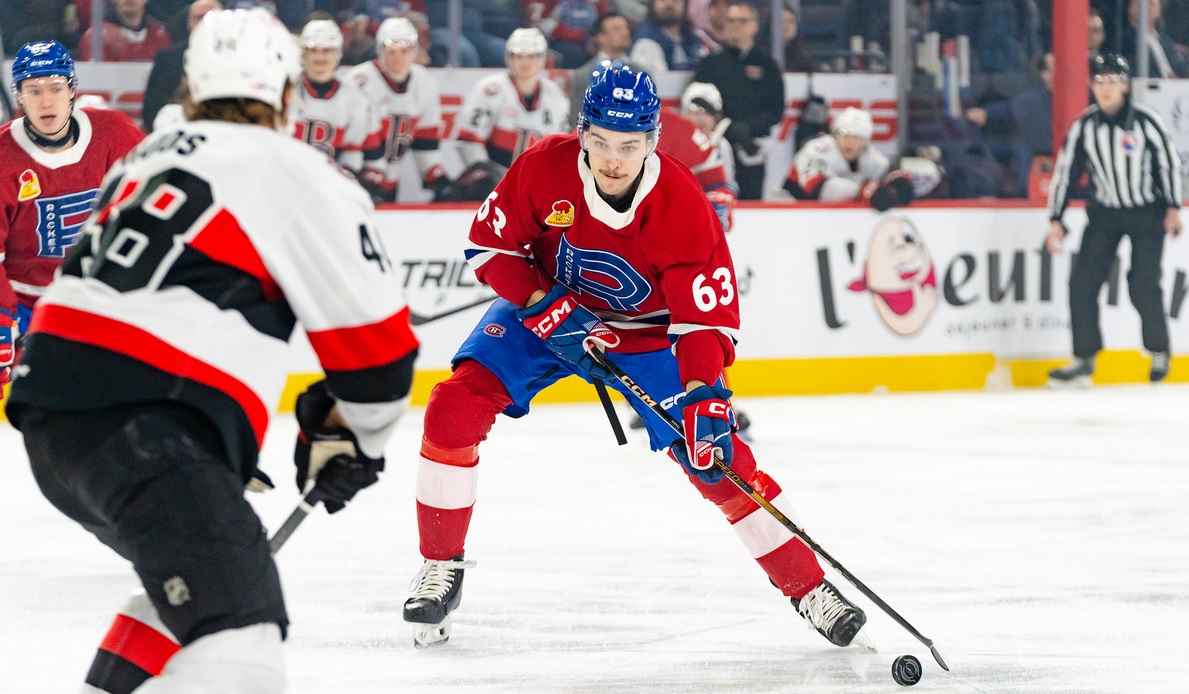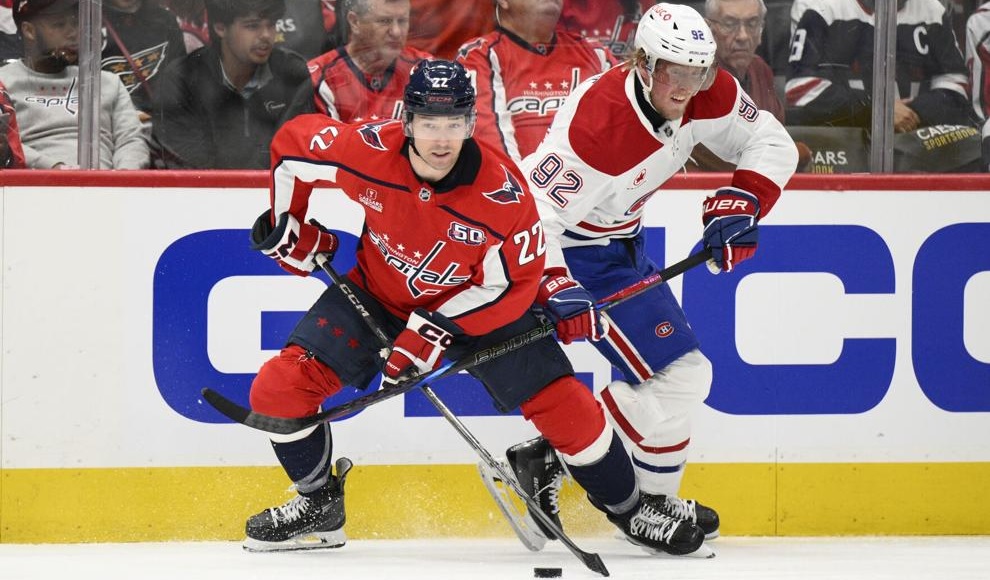HabsWorld.net --
Like most NHL teams with veteran rosters, the Canadiens face some tough decisions over the next few weeks as they prepare for the expansion draft. All NHL teams have two options: A. Protect one goalie and eight skaters (forwards and defensemen); or B. protect one goalie, three defencemen and seven forwards. The Habs are expected to go with option B, as are most teams. This article focuses on which three defencemen will be protected by the Canadiens.
Shea Weber will most certainly be the first Habs’ blueliner on the list. No need to elaborate here. Jeff Petry has a no-movement clause and, under the rules, his status as one of the three protected D-men is mandatory (of course, Petry would likely be protected in any event). As an unrestricted free agent, an aging veteran and a virtual lock to sign with the Canadiens over the summer, Andrei Markov will most likely be made available. Therefore, the third and final blueliner protected could be any one of Nathan Beaulieu, Jordie Benn and possibly Alexei Emelin. Perhaps this writer is unfairly dismissive of Emelin’s chances but his $4 Million per year cap hit, his expiring contract (after the 2017/18 season) and his late season struggles make Emelin the least likely of the three to make the cut. The third spot most likely will be between Beaulieu and Benn.
Beaulieu and Benn have some comparable numbers (see below) but, in many ways, these two D-men could not be more different, including their path to the NHL. Benn was a late bloomer and was signed to a pro contract as an unheralded free agent. He spent material time in the minors refining his game. Beaulieu was the fifth-ranked North American skater in the 2011 draft and was selected in the first round (17th overall) by the Canadiens. He was a Memorial Cup Champion and was selected to the Memorial Cup All-Star team.
Benn is a reliable, stay-at-home defender whose game is consistent, if unspectacular. His offensive upside is minimal (17 P, 4G, 13A in 2016/17) but he is solid in his own end. Benn makes a material contribution on special teams as a good penalty killer, employing thoughtful stick work to shut down passing lanes and sacrificing his body to block shots. In 2016/17, his numbers included the following: (64 hits; 144 blocks; 17 min. TOI with Habs; 18:37 TOI with Stars; -4; 28 PIM). As a general rule, Benn is a consistent performer. The coaching staff knows what they will get from him. Benn is signed to a club-friendly contract (a $1.1 Million cap hit through 2018/19) but he will turn 30 years old this summer.
Unlike Benn, Nathan Beaulieu is a two-way puck-moving defenceman. He does have offensive skills but those skills are displayed inconsistently. In his short NHL career to date, Beaulieu has struggled to finish plays. In his own end, while he has the ability to defend and make those breakout passes that serve to ignite the rush, Beaulieu too often opts for high-risk plays that result in glaring and ill-timed turnovers.
Early in 2016/17, the Habs had high hopes for the young rearguard and he started the season with Shea Weber on the top pairing. Unfortunately, Beaulieu’s development and play deteriorated as the year progressed. He ended the season as a healthy scratch as the Canadiens were eliminated in Game 6 against the New York Rangers, a very disappointing finish to the season.
Unlike Benn, a coach is never really certain what they will get whenever Beaulieu steps on the ice. He may lead an exciting odd-man rush, deliver an impressive tape-to-tape breakout pass or force a play that ultimately results in an egregious turnover. That said, Beaulieu is 24 years old, has more talent than Benn and there is greater upside to his game, particularly as a puck-mover. Beaulieu’s statistics for 2016/17 included the following: (65 hits; 102 blocks; 19:29 TOI; +8; 28 PTS). Beaulieu is currently a restricted free agent and the Canadiens must decide whether he will be one of their core defenders or should be moved before they commit to him long-term.
The decision is complicated by the very real possibility that Beaulieu will be selected by Vegas if he is made available. Beaulieu’s junior coach was former Habs’ assistant Gerard Gallant, who is now the inaugural coach of the Vegas Golden Knights. Gallant may well conclude that he and his staff can help Beaulieu become the two-way puck-moving D-man that we all see flashes of and wish that he would become for the Canadiens.
Ultimately, the decision may turn on Benn’s team friendly contract and the assessment of whether Beaulieu will be another late bloomer or just another skilled athlete who could not find consistency at the highest level. Defencemen, as a general rule, take longer to develop than forwards. There are many talented NHL defenders who took some time to find their game. Petry was maligned as a turnover machine on a very weak Oilers’ defence corps early in his career. The Minnesota Wild dealt Brett Burns to San Jose and we all know how that worked out.
Nathan Beaulieu does have the talent to become a consistent, two-way puck moving rearguard but this writer’s assessment is that it will never happen. The bad decision-making, inconsistency and the lack of focus (and perhaps lack of discipline) on some nights seem all-pervasive. Other nights, he is invisible. Some nights, he is on. There is little question that many other players simply want it more.
Based on the predictable and consistent deliverables that Jordie Benn brings to the table, the consistently inconsistent play of Nathan Beaulieu and Benn’s team-friendly contract, Benn would get the nod from this writer for the last protection spot. One proviso. Beaulieu should be shopped in earnest prior to the expansion draft. His skill set is intriguing for teams needing help on the back end and there will no doubt be some GM and coach that will delude themselves into believing they can help him reach his potential (they would likely be wrong). A trade should be made with Beaulieu before the expansion draft if at all possible.


